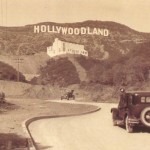In the Beginning… the Church and Hollywood
 Within the Christian community we acknowledge and oftentimes grumble about the disconnect between the church and Hollywood. We talk about building a bridge to secular media – and for the past 30 years, this has certainly been the primary mission of Mastermedia International. But in truth we are RE-building a bridge back to Hollywood. In film’s seminal years, when the motion picture industry was a mere celluloid infant, the church was considered the movie world’s determining audience. And initially a good percentage of Christians saw film as a remarkable opportunity to express Christian stories and values to a wider, national audience
Within the Christian community we acknowledge and oftentimes grumble about the disconnect between the church and Hollywood. We talk about building a bridge to secular media – and for the past 30 years, this has certainly been the primary mission of Mastermedia International. But in truth we are RE-building a bridge back to Hollywood. In film’s seminal years, when the motion picture industry was a mere celluloid infant, the church was considered the movie world’s determining audience. And initially a good percentage of Christians saw film as a remarkable opportunity to express Christian stories and values to a wider, national audience
The film industry got its start in the late 1800’s on the east coast, establishing the first motion picture studio in West Orange, New Jersey. But by 1910, with director D.W. Griffith leading the way, film production began under the sunny skies of So. California in the little village of Hollywood… an industry and culture was launched!
During these turn of the century days of film, the Christian worldview and the Biblical story was deeply ingrained in Western Culture. In fact, in the first century of film making, in addition to the countless Biblical epics, over 100 films were made solely focused on the life of Christ… that’s more than 1 per year.
It was sometimes said that Jewish moguls, hired Catholic Directors to make movies for the Protestant Audience. This wasn’t entirely true (Cecil B DeMille was an Episcopal lay minister), but the point was made that people of faith were well represented in the highest echelons of the studio system.
1927 brought the advent of the “talky” and on into the 30’s film transitioned from the silent era into this new audio phenomenon. In large part, the Christian audience followed along, remaining the focused audience of the studios. But as the 30’s brought an increase in provocative subject matter on-screen and sex and drug scandals off-screen, church leaders grew concerned of the dangers of worldly cinematic amusements. In light of this moral descent of film, the Church shifted their focus from embracing and producing movies to censoring, critiquing and policing them. The film industry established the Hays Commission, led by its namesake Will Hays, a Presbyterian elder. The Catholic hierarchy began the Legion of Decency.
As World War II ended, the mid-40’s brought a change in the cultural wind. As American soldiers returned home from Europe and the Pacific, and foreign films entered the US marketplace, new ideologies began to take root. Seeds of secularism were planted, often times blooming on the screens of local theaters.
Our response? Some panicked! Some pulled out! Some stopped going to the movies – “what business does a Christian have being in a dark theater?” And perhaps the most detrimental outgrowth of our response, a generation of talented young Christian creatives were discouraged by many, condemned by some, from entering the media business. As the church relinquished the task of providing or supporting positive, life-affirming films, the secular film culture filled the void!
The Good News? Christian filmmakers, media ministries (such as Mastermedia) and the Christian audience is returning… and in an impactful way. Faith-filled films are being produced in record numbers, some being embraced by mainstream audiences and strong box office receipts.
Through it all, our hope and prayer is to play our role in re-building that bridge back to the most important, influential, cultural defining mission field and people group on the planet!
Resource:
Chapter: “Silent Cinema and Religion” by Terry Lindvall
The Routledge Companion to Religion and Film, edited by John Lyden, published by Routledge, 2011
